NATALEE DECKER
CRIP FANTASY

CRIP FANTASY is a collection of work about assistive technologies and the bodies which employ them. As someone who is noticeably disabled, I worry over my own desirability. The mobility devices I use each day – such as walkers, wheelchairs, scooters, quad canes – are both an extension of my body and symbolic of how it is disparaged by conventional attitudes. These are objects of freedom, yet they are often relegated to an aura of sterility, medicalization, and pity. By creatively re-imagining fantasy crip technologies, I explore the aesthetic possibilities of these objects while demanding the reconsideration of ableist social infrastructures. Fantasy allows re-imagined futures untethered by the realities of a body, attitudes, gravity, material – while also being grounded in a vital questioning of our present. I fantasize to escape the tedious and limiting metrics of normalcy – from a world that tells me I am unwanted. I fantasize to indulge in a flamboyant embrace and accentuation of difference. Crip bodies deserve recognition of their aesthetic power; crip bodies deserve desire

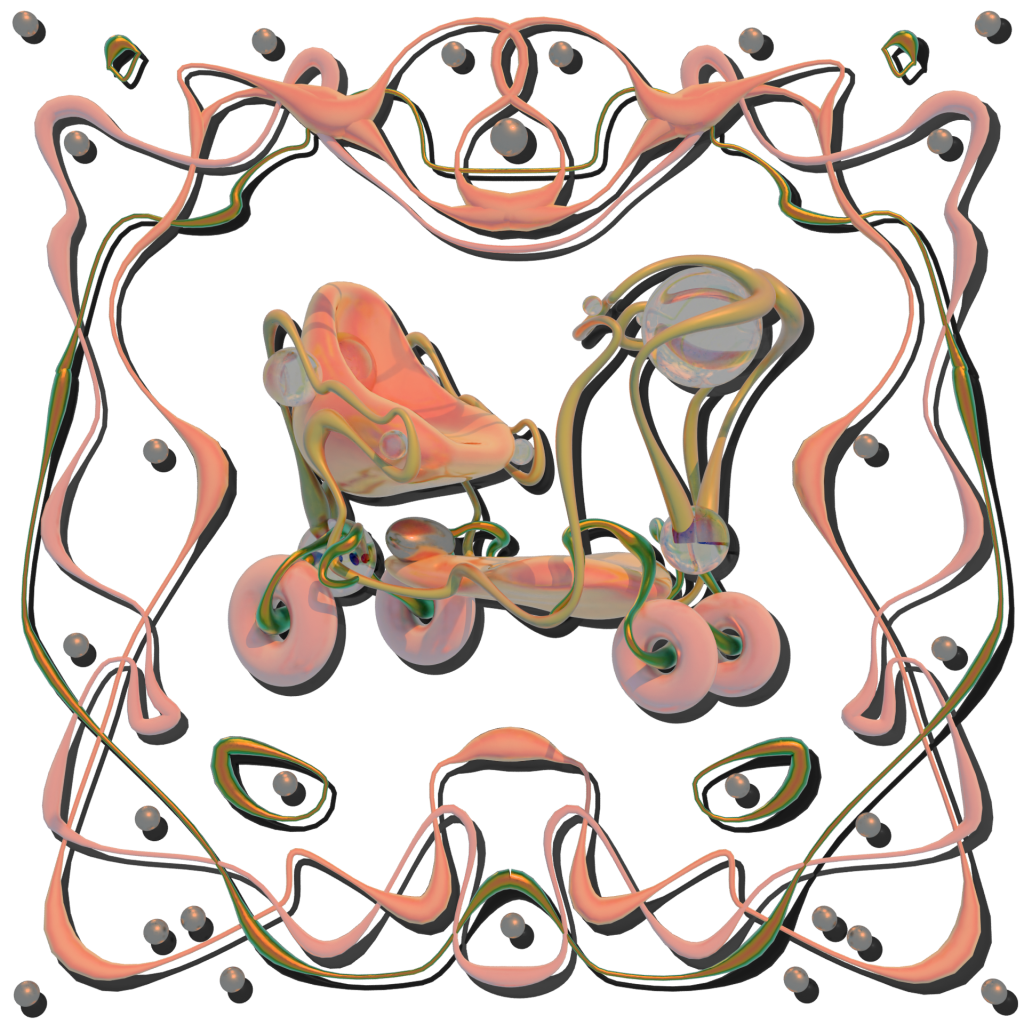

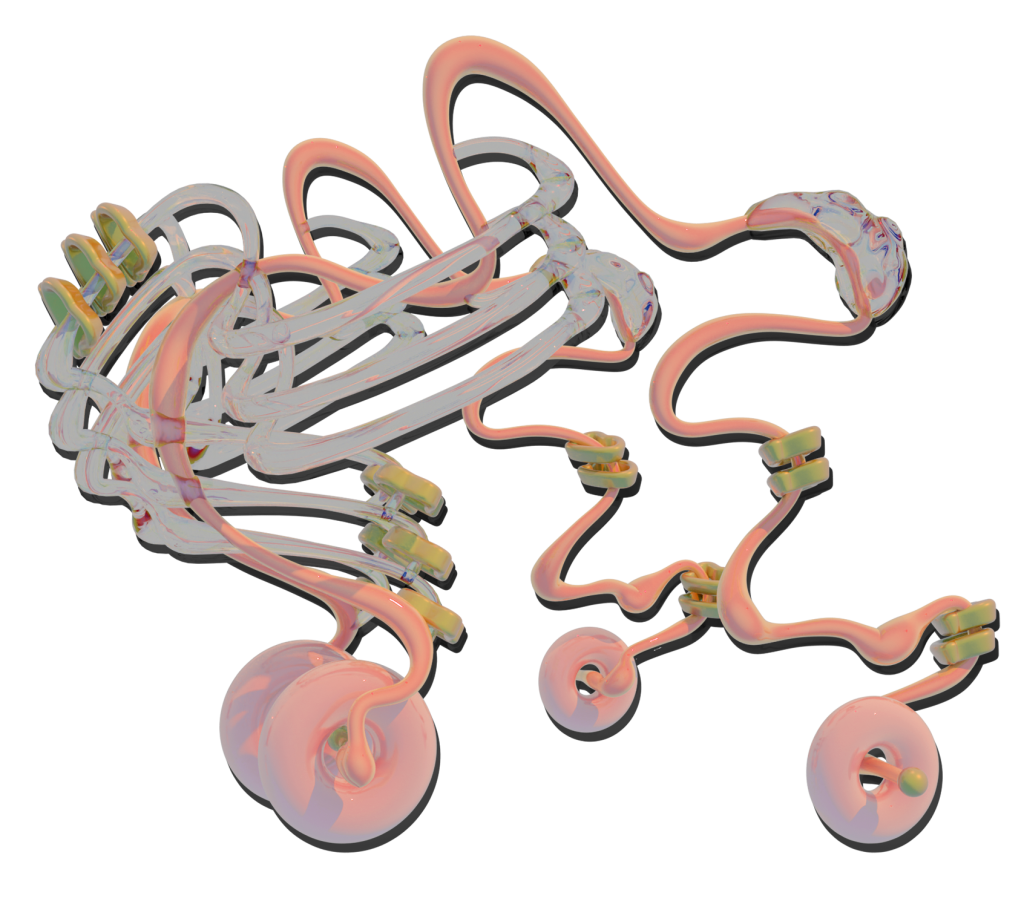

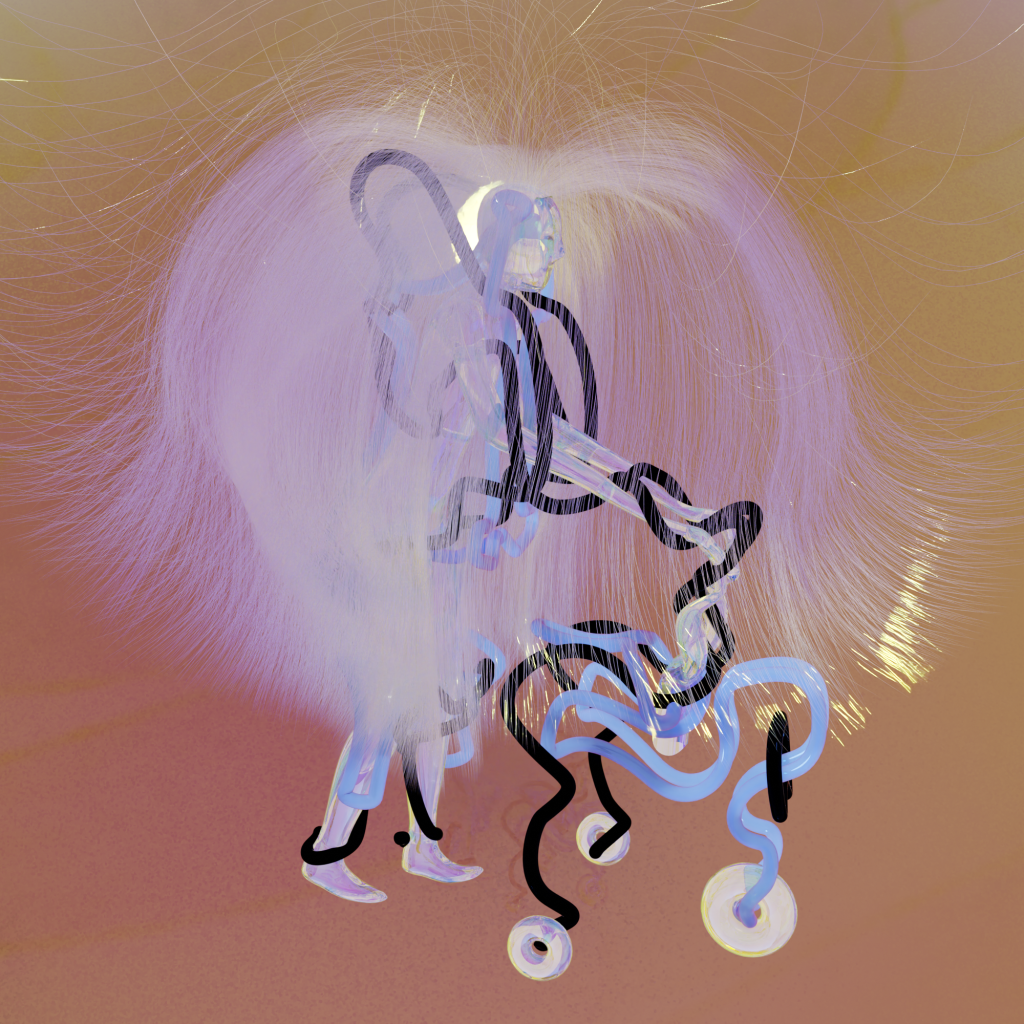

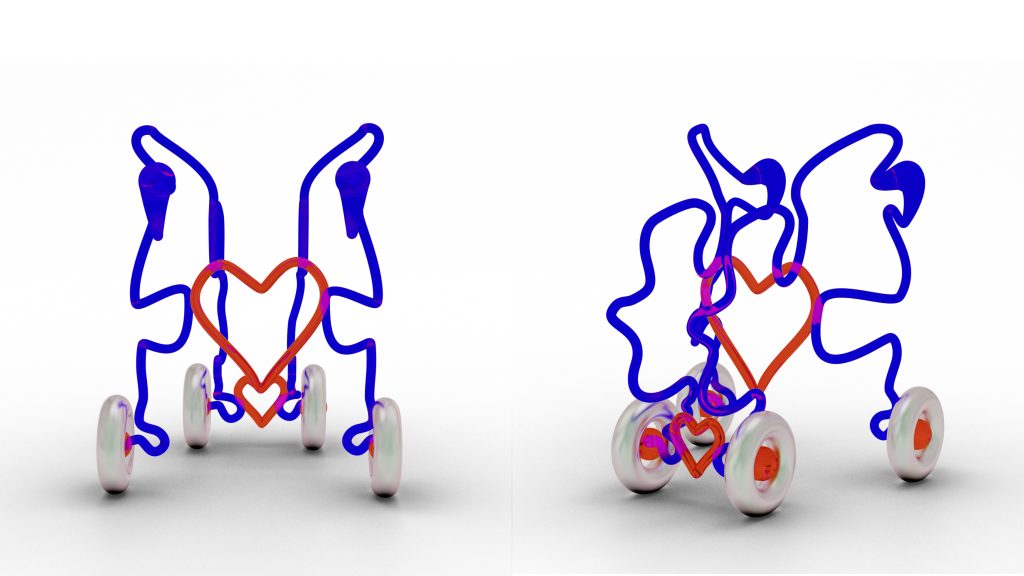



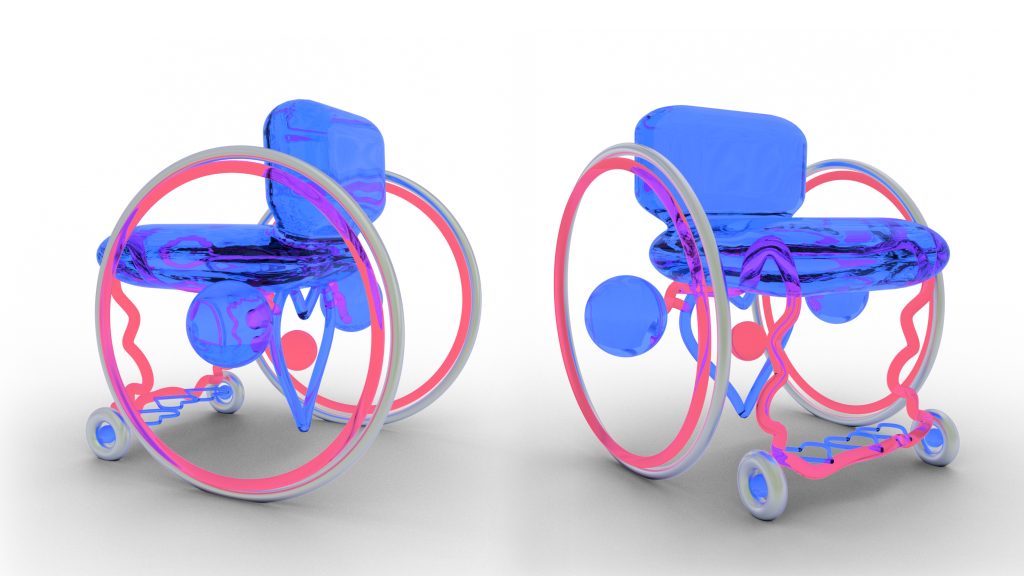

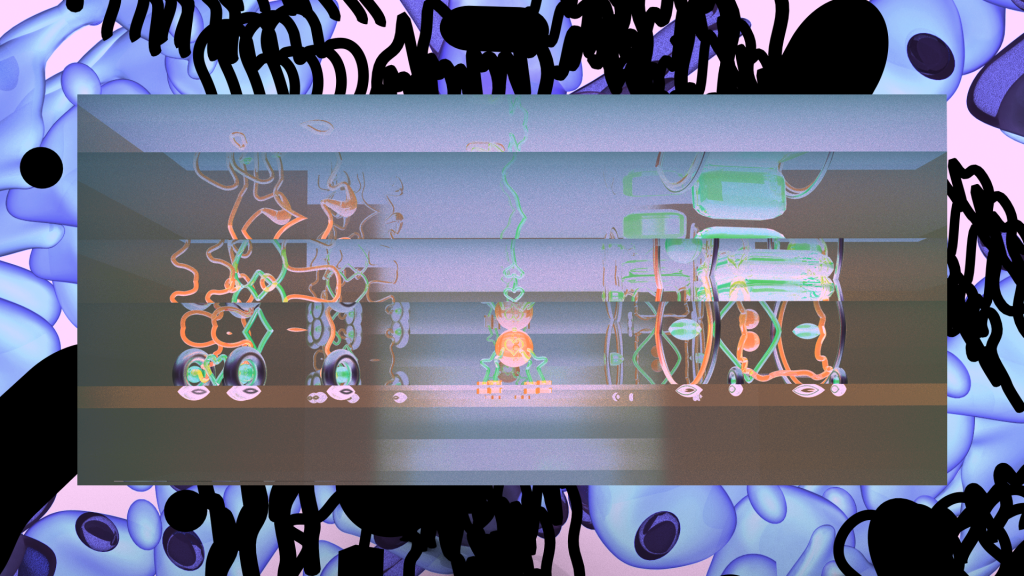
ID: This video contains music and CG animation. It opens with a metallic CG wheelchair floating on a white background. The sound of a gritty bass note enters and the wheelchair drops fluidly squishing into the floor. The wheelchair cuts between floating and splashing onto the floor in sync with the soundtrack of distorted bass and drum with layers of timing modulation FX. Next, a wiggle shaped CG rollator walker, quad cane and wheelchair are side by side drenched in gold and purple light. There are mirrored planes creating horizontal slats across the scene which rotate vertically as the reflections shift and distort. 2 metallic feet rotate over a white square. The left foot steps down and flattens like a gelatinous fluid on the surface. On either side are black and white close ups of skin (the bottoms of my feet) which cut with the rhythm of the drum hits. The feet are replaced by a black and white distorted machine learning clip of various generated figures using mobility devices in a room. The music intensifies as the video cuts to a rotating view of a pink and purple mess of wiggly shapes, hearts, and orbs around a glass wheelchair. The rotation reverses and the wheelchair is isolated in blue and green, cutting between these two shots. The same reflective planes over squiggly mobility devices are seen in the center of the screen over a skin close up background. It is replaced by a black and white machine learning latent walk of a wheelchair over the rotating feet and small squares of green and periwinkle MRI scan animations pop up and disappear with the drum hits. Blue and pink repeated squiggles and capsule shapes rotate around a glass quad cane with skin close ups bordering on either side. The rotation reverses and the quad cane with a green and blue squiggly pole and cube shaped feet is isolated, cutting and layering between the 2 shots. Again the reflective slats are centered in front of a colorful and shape shifting background and the MRI animation squares appear and disappear with the music. There is a flickering moment of the machine learning mobility devices and a CG body performing side stepping motions over a black background. The same floating metallic wheelchair, now tinted black drops and squishes to the floor, layered with rotating transparent shots of the squiggly rollator in neon red and green. A rotating shot of a pink and blue glass rollator surrounded by many repeated squiggle shapes. This cuts between an isolated reverse rotation of the rollator in blue and yellow with heart shapes built into the 4 wheeled frame. A square latent walk of a wheelchair is centered over a layered background of shiny silver ripples and skin. The latent walk deconstructs into a lattice of shifting angles as the rotating view of the shapes and glass wheelchair returns layered by a latent walk of a walker. Fast cuts between the reflective planes and the hovering/squishing metallic wheelchair follow the fast rhythm of the drum beat. A black and white inverse view of the shifting machine learning clip of figures moving around space in mobility devices. The ML scene is repeated in 3 centered vertical squares. Squares of skin close up appear as the background changes to the reflective planes moving over the 3 mobility devices. The shots cut between a black and white layering of the rotating deconstructed cane, a ML latent walk of a walker, squares of skin close up and a CG figure cycling between different physical motions and the rotating views of the 3 mobility devices in red and blue, layered with repeated black squiggle shapes on a white background. The final shot fades to the metallic wheelchair rippling with impact on the floor, flattening with the floor surface as the music ends.

Models may take a moment to load. AR version is available when viewed on a smartphone.
ID: 3 interactive 3D model viewers of fantasy mobility devices. Each is made up of a frame of curving and bulging tubes in bright blue, green and black, and puffy white quilted seat cover and tire texture. Each has a black radial star shape where a body might be placed in relation to the object in use. The 1st model is an abstract wheelchair, the 2nd an electric scooter and the 3rd, a sort of rollator walker.

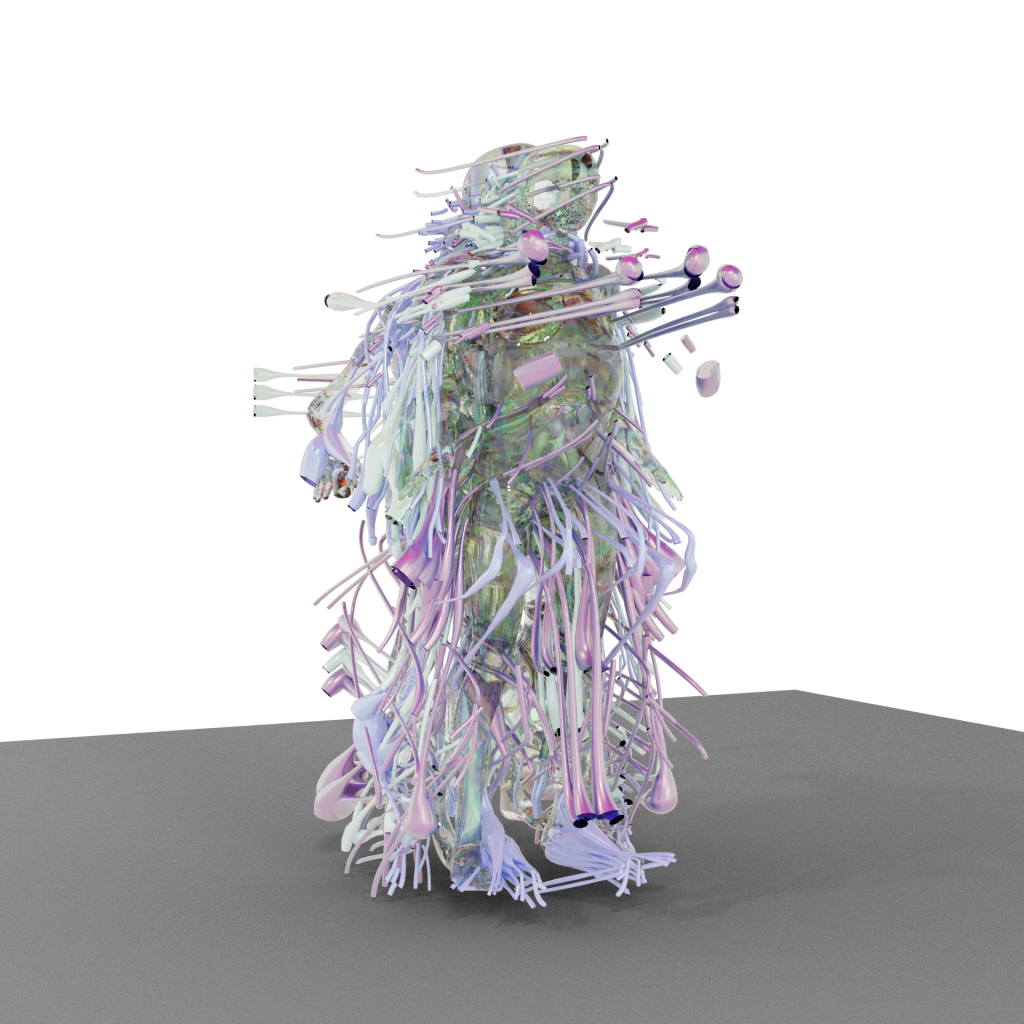
ID: A short animation clip of an abstract figure with a blurry translucent body tinted chalky blue. Extending from and surrounding the body are many tubular fibers of greens and browns which weave through the body like inflated nerves, and extend from the hands to form an extra set of appendages. The figure walks forward and the extra tube legs take steps in sync with the body, providing extra support.

ID: This video contains CG animation and an eerie pulsing soundtrack like echoing footsteps on a wood floor, and clanging bells. It begins with a translucent figure, filled with strokes of pink and aquamarine, walking towards the camera. Thin blue tubes twist around the body, forming a crown over the head and extend down the arm to a silver quad cane the figure uses to assist their jagged gait. Fades to a view of the back of the figure walking, showing purple vertebrae details that protrude from the back on either side of the spine. Close up shots extend down the body and over the cane as the figure walks on the mirrored floor. Cut to a scene saturated in purple and a liquid body, connected to a squiggled tube rollator walks on a mirrored floor which reflects textures of blue and purple scales. Cut back to the initial figure walking, then floating in the center of the shot while canes and repeated tube shapes float and rotate around the figure in front of a blurry reflective background. The shot cuts back and forth to two of the purple figures with twisty and rollators and layered shots of the figure with the quad cane being orbited by shapes.
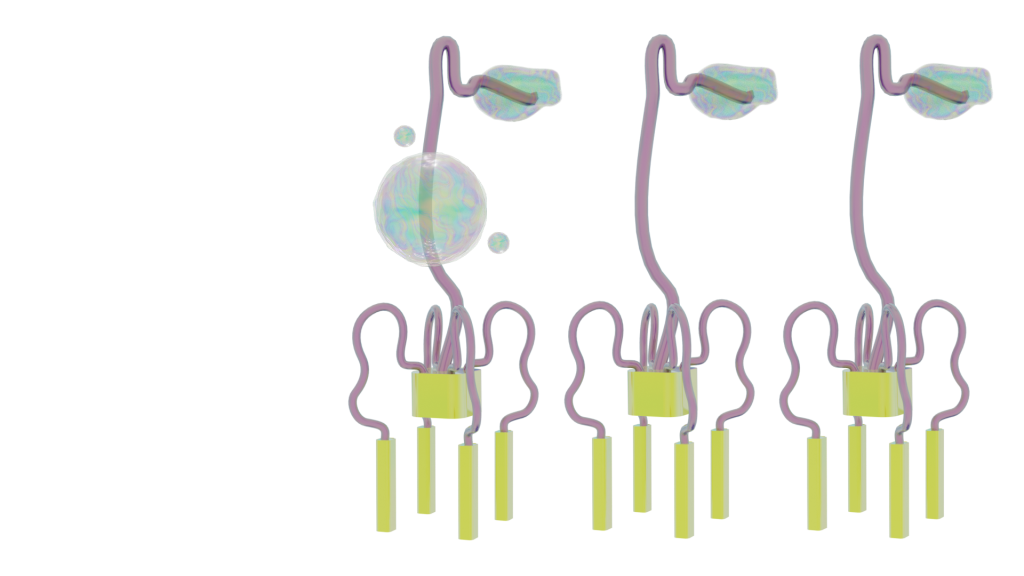

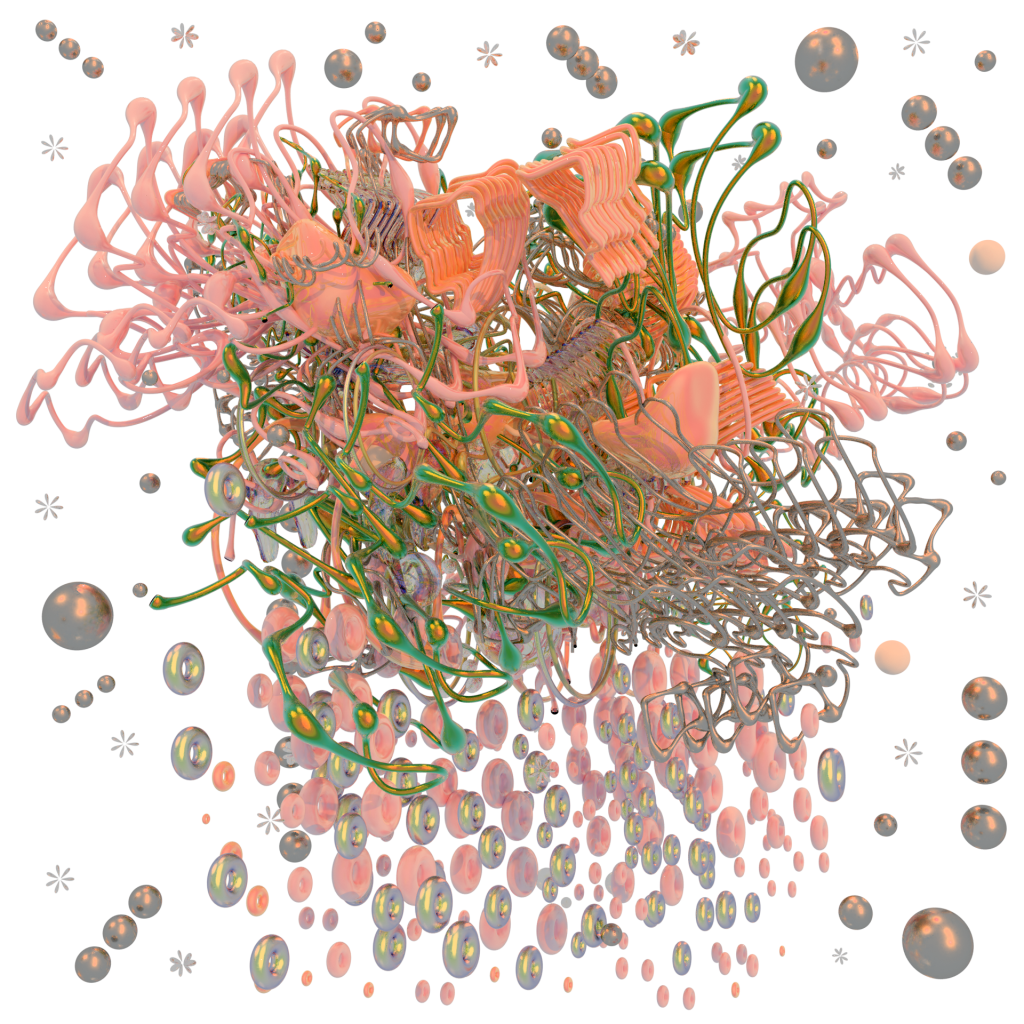

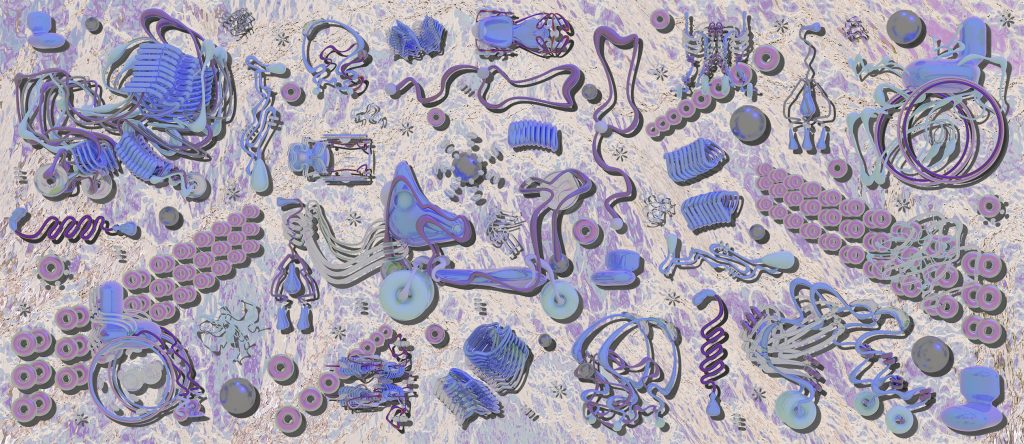


NATALEE DECKER
Natalee Decker (they/them) is a Chicago born Los Angeles based artist currently pursuing an undergraduate degree at the University of California, Los Angeles in Design|Media Arts and Disability Studies. Via a multidisciplinary practice, they investigate disability aesthetics, technology, and crip fantasy. Their recent work utilizes 3D computer graphics to creatively reimagine the mobility devices – walkers, scooters, wheelchairs, canes – they use each day, imbuing them with fluid impractical form, vivid celebratory color, and questions about desirability. Along with artist Cielo Saucedo they are creating a web archive of digital disabled embodiment using motion capture and 3D modeling software. This project relies on collaboration to create custom “terms of use,” challenging issues of safety, exclusion, and exploitation of disabled people in digital space. In 2020, Natalee helped form the UCLA Disabled Student Union working towards better equity and access on campus. They are passionate about mutual aid, social justice, and love. Natalee is a white, disabled, non-binary queer.

